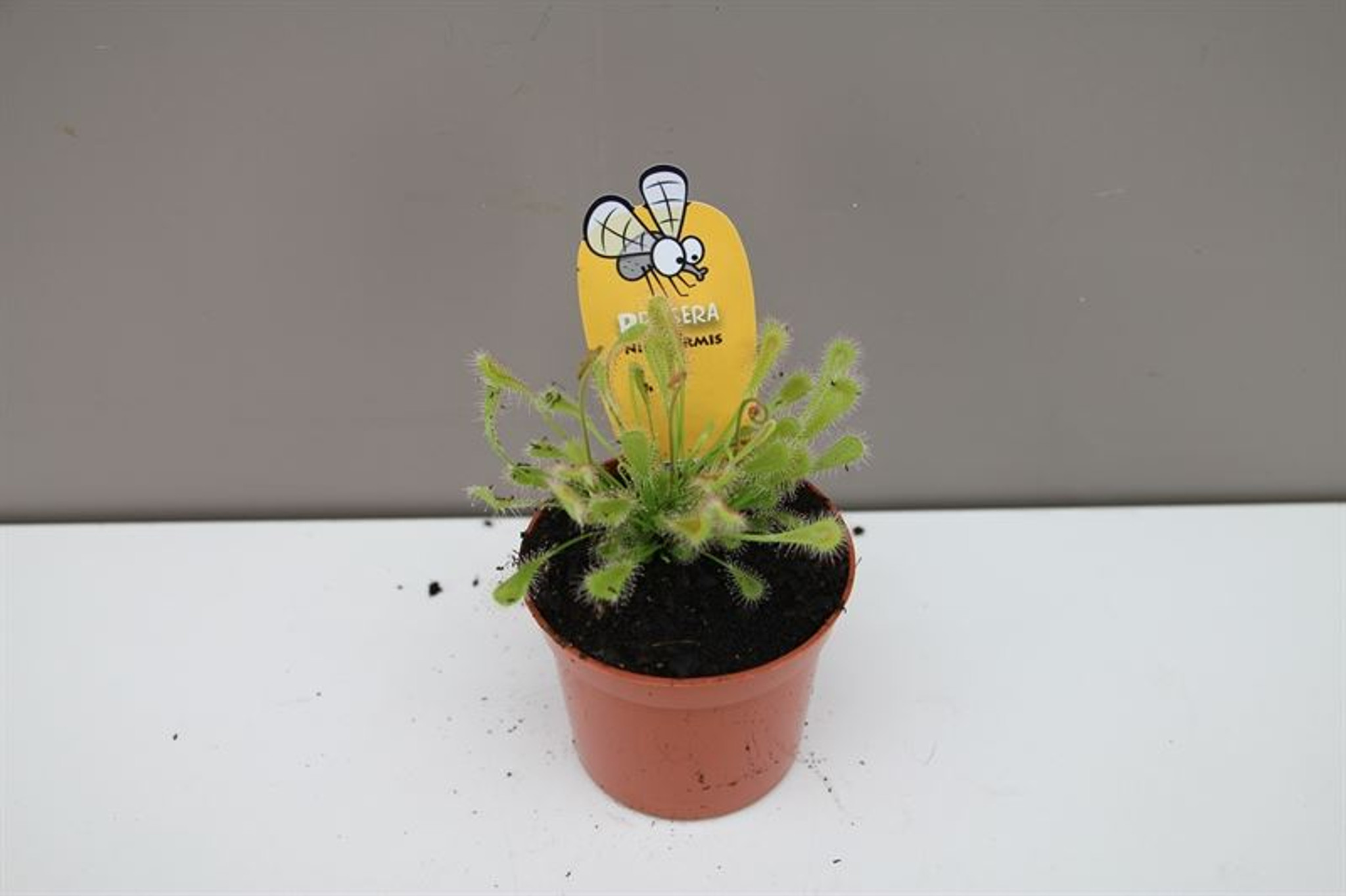
Drosera nidiformis
£6.49
Drosera nidiformisDrosera nidiformis is a beautiful subtropical sundew from South Africa. It reaches its full potential when fed often, especially when grown in a bright location outdoors, when it can catch plenty of insect prey. Drosera nidiformis has become very common CP collections due to its ease of growing, its ability to produce many easy-germinating seeds, its clumping/spreading habit, and ease of propagation. Some growers have reported problems with this species, such as dying off after flowering, but this hasn't occurred for me yet, growing them indoors. The only potential issue with this species is that it has a tendency to succumb to a endosymbiotic fungus that causes the plant to lose its dew (sometimes turning a sickly pinkish-red color or browning at the tips). While I have not had much of a problem with this, my success may be due to the well-draining peat:sand mix I now am using, as well as the decent-sized 4-inch-tall pot that keeps the roots well above the water level in the tray. Nevertheless, fungal attack has been a problem for some growers and is described in this terraforums thread and this ICPS page. More info is provided in the Media Moisture section below. |
|
Above: young Drosera nidiformis plants exhibiting red-orange coloration |
Media: Not picky. I use a 1:1 peat: sand (silica) or with a higher ratio of sand to promote drainage. Perlite can be added, as well, if you have good air circulation, or are growing them outdoors. LFS or living sphagnum should also work well, but I haven't had a chance to try this. Be sure to rinse your media before you use it Media moisture: In cooler temperatures (55-70 F) and shorter photoperiod (8-11 hours)/ lower light intensity: When growing indoors, I have found that Drosera nidiformis has a succeptibility to root rot and fungus if its roots are flooded when grown in low lighting/photoperiod and cooler temperatures. Try to keep the media moist, occasionally letting the the soil dry out a bit more if you're experiencing problems with fungus, or if the plant doesn't look happy (This should not be an issue in bright lighting or warm temps). In warm temperatures (80-90 degrees F), bright light intensity/longer photoperiod (12-18 hours): The media should be kept a bit more moist, as D. nidiformis can become a bit stressed and lose its dew if the media dries out when exposed to elevated temperatures/ and bright light intensity (as is also the case with most sundews). Humidity: not much needed. I'd recommend at least 30% to be safe. Mine get ~45-50% humidity during the 85-90F temps in my room during the summer. Pot height: I recommend 4 inches or taller, though it can do fine in small pots. Drosera nidiformis can develop a a long, branching root system when established. A tall pot will allow this sundew to reach its full potential, and avoid any potential issues with root rot. Trapping speed: moderate. Leaves will curl noticeably around food within a few hours. Feeding: Feed once every two weeks for rapid, larger growth and flower production. See feeding page. Feeding encourages flowering. If fed while flowering, the newest leaves will not shrink in growth, and the plant will continually flower until it is not fed. Food size: small to medium. Plant dimensions: Drosera nidiformis does not form a stem over time- it remains at ground level. The upright leaves of Drosera nidiformis can reach higher than 2 inches at maturity. Newest growth remains upright, and the older leaves gradually decline towards the ground. Temperature: see media moisture section for instructions on how to water your plant in varying temperatures. Not picky when provided appropriate water levels. Drosera nidiformis has grown well for me indoors in the temp range of 60-90 degrees F. Give Drosera nidiformis subtropical conditions for best results. Lighting/Photoperiod: I grow my D. nidiformis directly under T-8 lights with a 16-hour photoperiod. The leaves will turn a brilliant gold-red color under intense lighting, or when left unfed for several weeks. Dormancy requirements: None required. Drosera nidiformis can be grown year-round if grown indoors during the cold months. I recommend the tray method. However, Drosera nidiformis should come back from the roots if it freezes (mild freezing temperatures) or if it dies from dessication/drought. Flowers: D. nidiformis produces a fairly long flower stalk that often gets burned in my lights. It self-pollinates very easily and is known to become a weed in collections over time. Propagation TechniquesSeed: very easy. no cold stratification required. Drosera nidiformis can be grown to flowering maturity from seed in less than 1 year if fed approx. every 2 weeks. Leaf-cuttings: very easy. The water-floating method works best. Place directly under lights for the hightest strike rate. Root cuttings: easy. Roots are a bit more narrow than most South African sundews, but they work extremely well. Divisions: easy. Drosera nidiformis tends to form clumps over time, via budding from roots and seeds that spread similarly to the weedy habits of D. capensis. D. nidiformis has no trouble dealing with repotting and root disturbance, so divisions can be taken easily. |
Other Details
Gift Wrapping:
Options Available
Shipping:
£5.99 (Fixed Shipping Cost)



